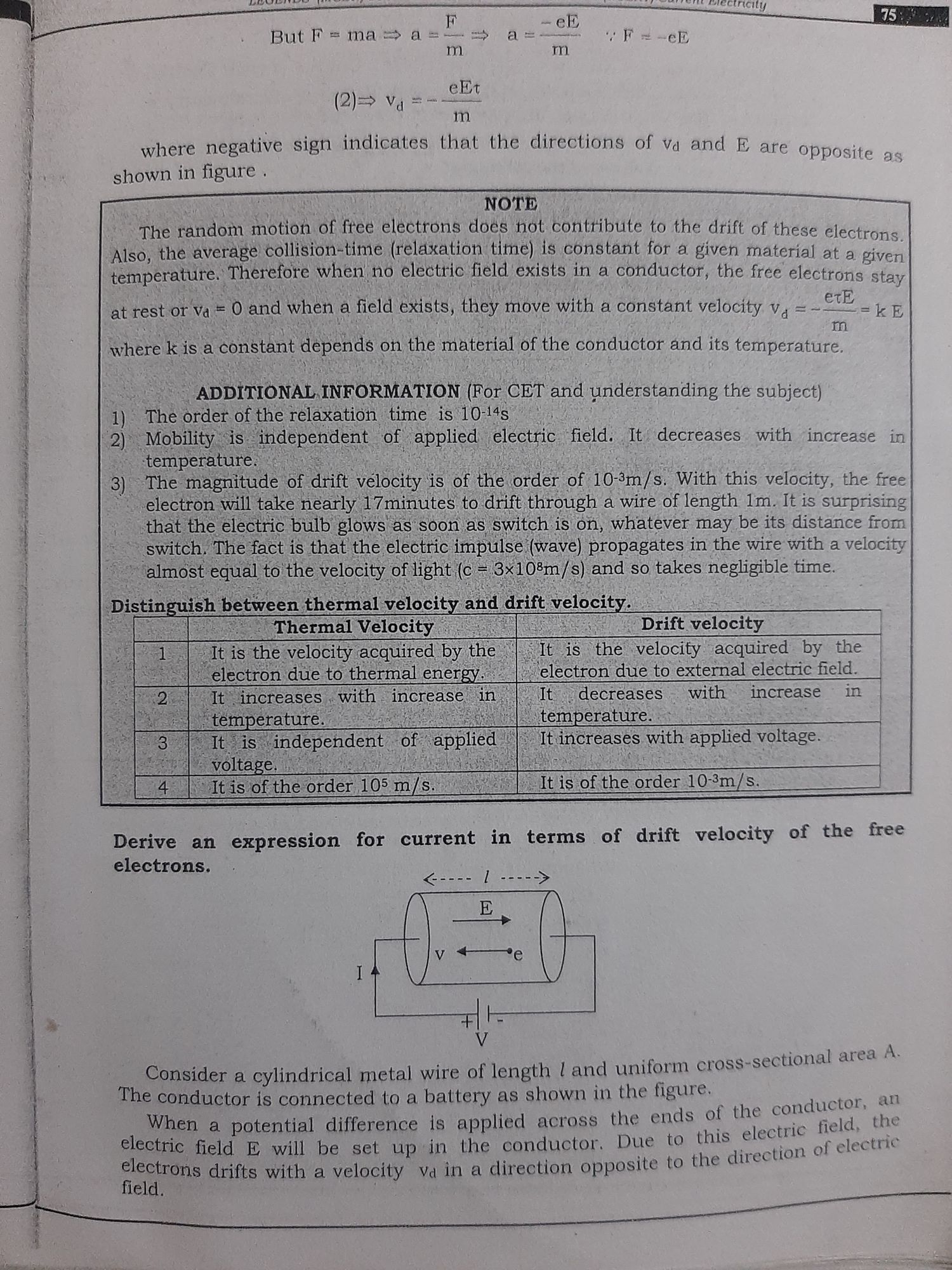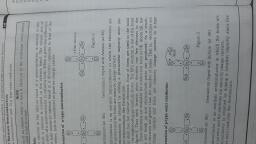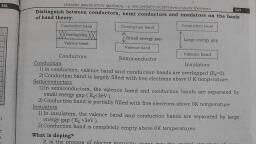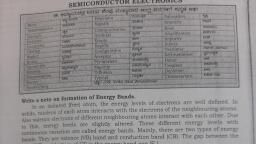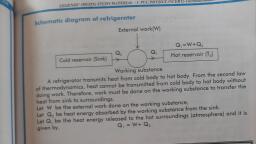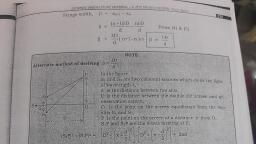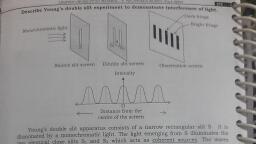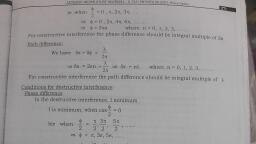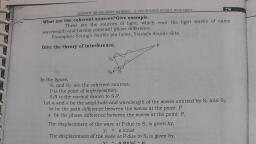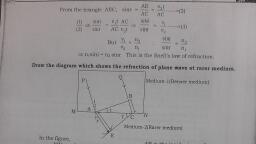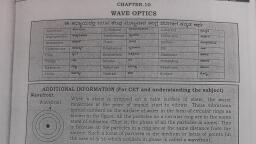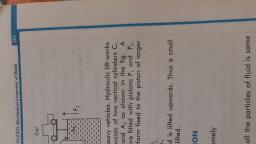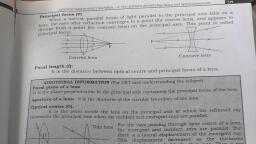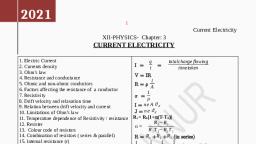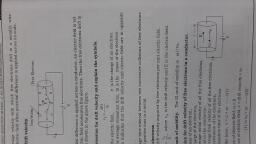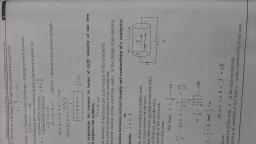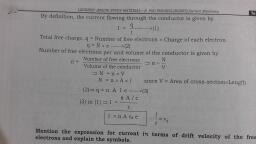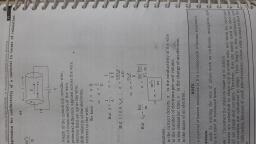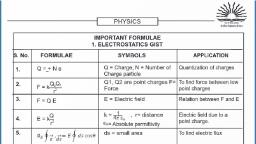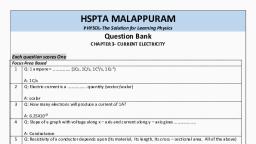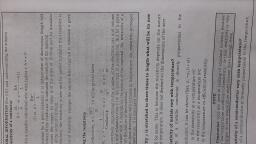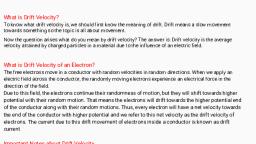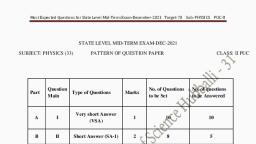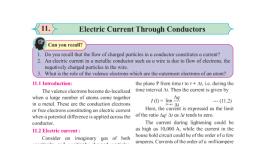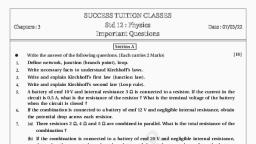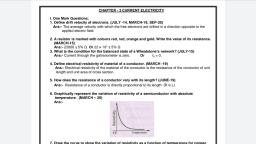Page 1 :
eines, , , , |, |, , , , , But F = mas a=— =>, , et, (2) vy =-——, m, where negative sign indicates that the directions of va and E, , shown in figure ., , are Opposite, , as, , , , , , , , , , , , , , , , , , , NOTE ny, The random motion of free electrons does hot contribute to the drift of these electrons, , Also, the average collision-time (relaxation time) is constant for a given material at 5 ee, , temperature. Therefore when no electtic field exists in a cohductor, the free Bebtisnis. stay, , at rest or Va = 0 and when a field exists, they move with a constant velocity y, = poses ae, , ‘ } ‘ , im, where k is a constant depends on the material of the conductor and its temperature., , ADDITIONAL, INFORMATION (For CET and understanding the subject), , 1) The order of the relaxation time is 10's ~, , 2) Mobility is independent of applied electtic field. It decreases with increase in, temperature: ae soca, , 3) The magnitude of drift velocity is of the order of 10-3m/s: With this velocity, the free, , ~ electron will take nearly 17minutes to drift through a wire of length Im. It is surprising, that the electric bulb glows as soon as Switch is on, whatever may be its distance from, ‘switch. The fact is that the electric impulse (wave) propagates in the wire with a velocity, , ’ almost equal to the velocity of light (c = 3x 108m/s) and so takes negligible time., , Distinguish between thermal velocity and drift velocity., Qe thermal Velocity, | “Drift velocity, , “Tt is the velocity acquited by the “| “It is the’ velocity acquired by the, , electron due to thermal energy. — |) electron due to external electric field., , It increases . with increase in) [> It “decreases with increase in, perature. ce, , emperature., is “independent of tincreases with applied voltage., , Itis oft, , , , , , , , , , , , , he ordér 103 m/s. _ “It is of the order 10°m/s., , , , Derive an expression for current in terms of drift velocity of the free, , electrons., <---- | ----- >, , Vv, , Consider a cylindrical metal wire of length | and uniform er, The conductor is connected to a battery as shown in the figure., , When a potential difference is applied across the ends of, electric field E will be set up in the conductor. Due to this elec ose, electrons drifts with a velocity va in a direction opposite to the direct, , oss-sectional area A., , the conductor, an, ctric field, the, of electric, , | field., 4 : el, , t, }
